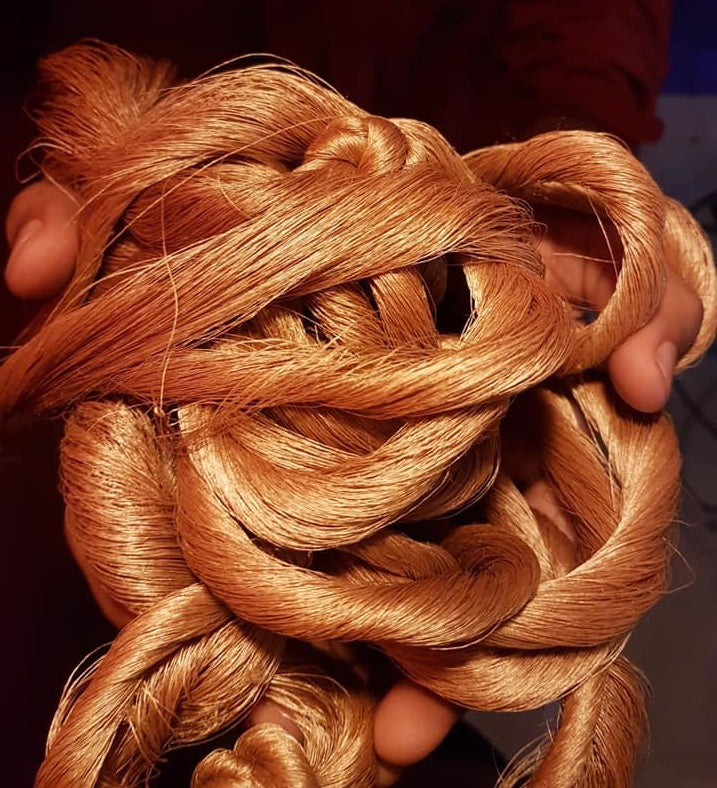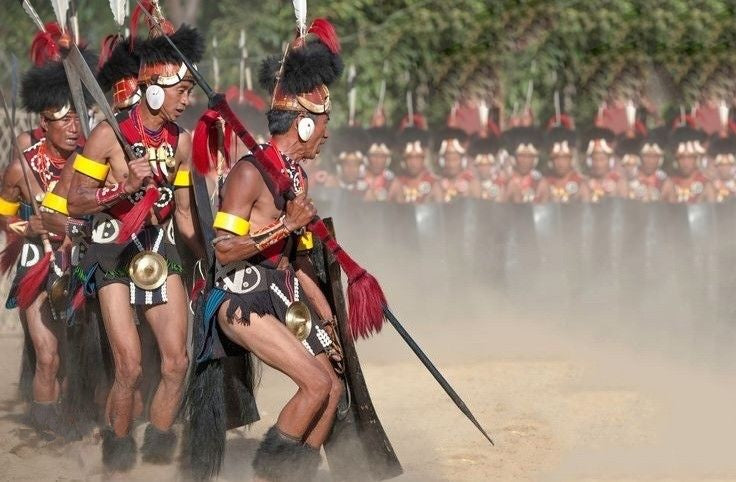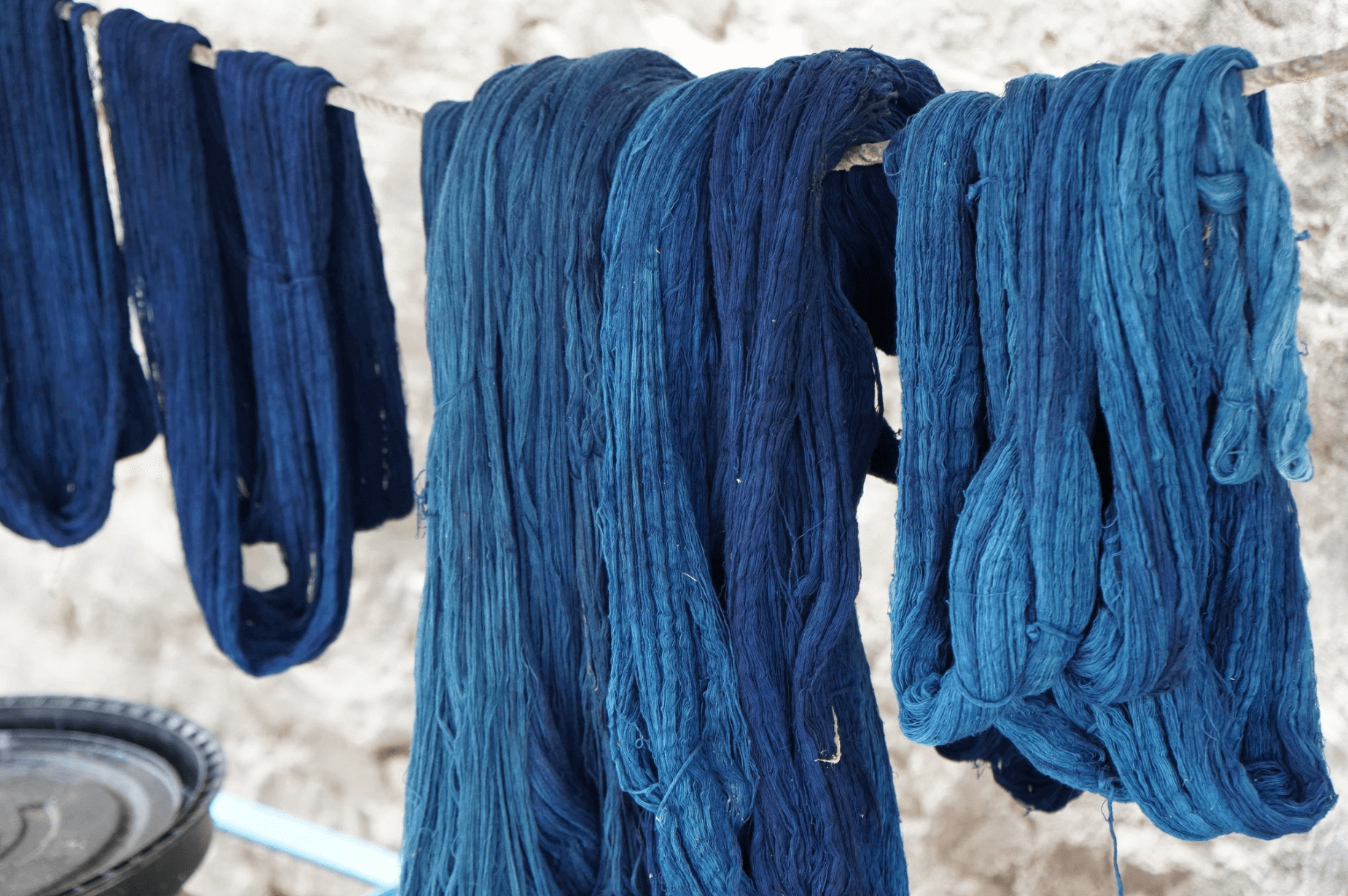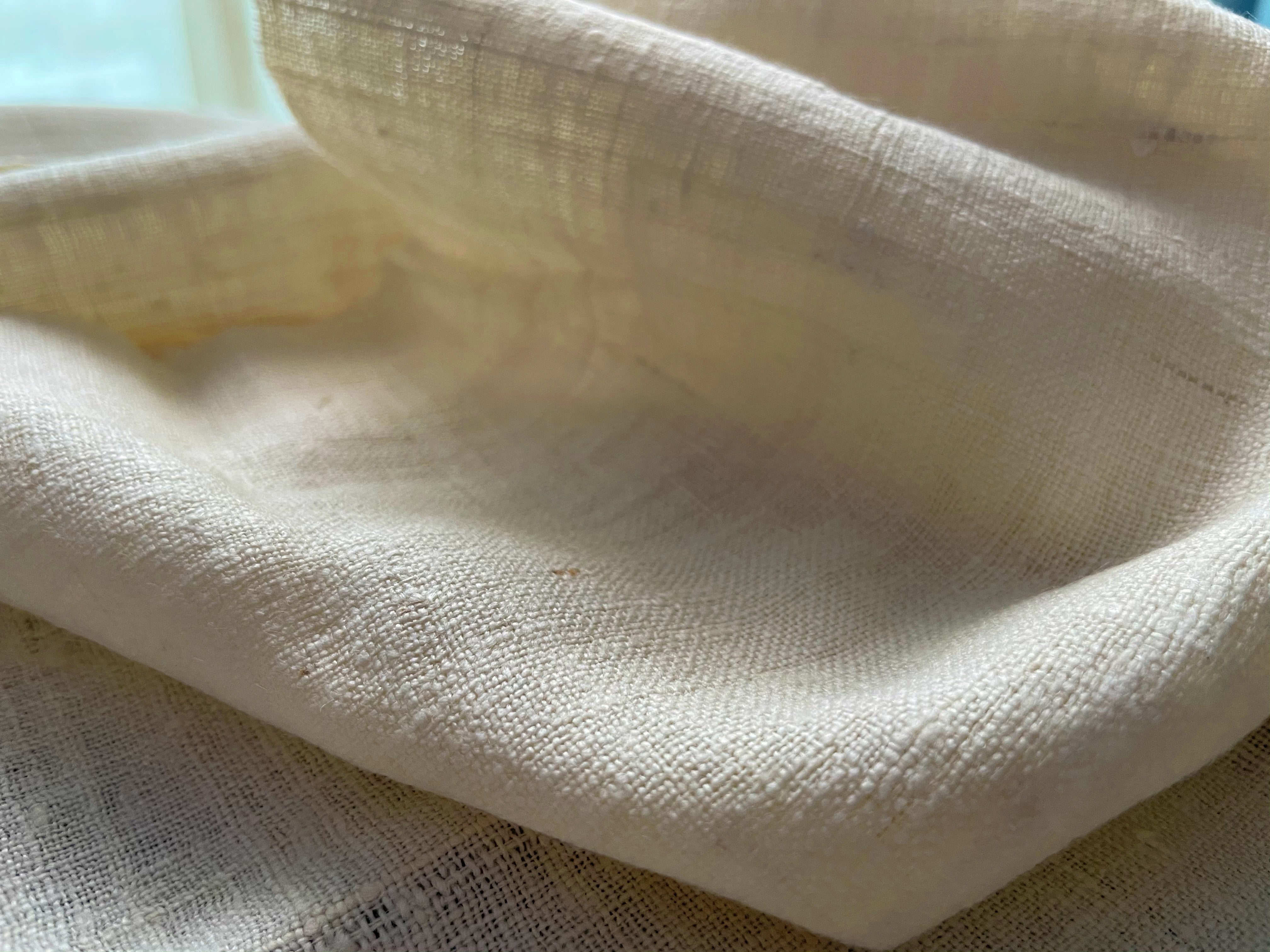The Story of Muga

We have a customer who is so in love with Muga, she has to own almost every Muga saree that we bring out. But I don't blame her. Muga commands that kind of awe and reverie. My mother, who has grown up touching and feeling Muga on a regular basis, would still sigh at the sight of a new Muga piece in the workshop. Such is the charm of Muga; it is just divine. Needless to say, it is our most favourite fabric to work with, to touch and to look at.
An Exhalted History
There is no record of when Muga silk production began in India. Kautiliya, a philosopher, economist, teacher and royal advisor, who lived between the fourth and third centuries BCE, mentioned the production of a golden silk in ancient Assam in his writings. It is thought that the cultivation of different types of silk moths was introduced by Tibeto-Burman migrants centuries before he wrote about it. It is during the Ahom dynasty, which ruled Assam for 600 years from 1228 that Muga silk really took off as a luxury commodity.
During the Ahom rule, Muga silk was reserved for royalty, high ranking government officers and aristocrats. The silk is the most gorgeous soft golden colour, and it seems to be more durable than other silks. Its natural lustre also increases with wash and wear, making it perfect for heirloom fabrics. The Ahom rulers used the appeal and desirability of Muga silk to help trade with other regions, and also overseas. Visiting dignitaries were often gifted clothing made from Muga silk. Royal looms were operated by female weavers within the palace, and the fabric woven on them was destined only for the royal family. Many of these weavers were personally trained in the art by some of the Ahom queens.
Its fame spread. Demand for the fabric even from within the upper echelons of society was hard to meet and so production was outsourced into the region. Almost every woman and many men in the region were proficient in spinning and hand weaving. A girl was considered unfit for marriage if she could not operate a loom.

And then came the British…
Unfortunately for the industry, it did not thrive as it could have done during the British Colonial rule. Although the British did see some value in silk exports, they were more focused on trying to open up the markets for new cottons and wool fabrics produced in burgeoning mills of the industrial revolution. The increase in tea plantations to satisfy tea export demands also put a strain on the labour market, reducing the number of people available to work in sericulture.
The British occupation notwithstanding, production of silk was, and remains extremely important to the economy of Assam. In 2007, Muga silk received geographical indication (GI) protection, which means that genuine Muga silk can only be produced in Assam. Thanks to the increased demand for natural fibres, this is great news for Muga silk farmers who have accumulated centuries of experience in Assam silk moth sericulture.
What’s it like to drape?
Gorgeous! People say that the fabric feels similar to Tussar silk, which is unsurprising as it comes from the same moth family. Connoiseurs however think that Muga is class apart and everything else fades in comparison. Tell us what you think!
Where can I buy it?
From us, of course! But if you happen to visit Assam and prefer to pick up from the local shops, do your homework and gather information on how to spot a real one from the fakes. A lot of pushy sellers try to cheat unassuming customers by selling a mixed Muga - one that is blended with Tussar.

Alternatively, Government emporiums across the country will stock the real deal. Be wary of buying it online from just about any vendor who claim to sell Muga. Most of them are fake, especially the ones claiming to be providing colour variety like red or pink or blue. Remember - Muga is honey toned and a real piece, one that is woven in Assam, is never dyed. That is the hallmark of Assam's most precious silk.




